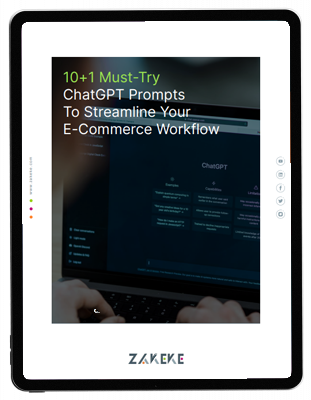What are the best SEO practices for your online store? Let’s take a look at the following guide specifically designed to improve e-commerce web positioning on Google.
1. Define the categories and products of your online store that you want to work with
First of all, you should select the products from your online store that you want to enhance their positioning.
So my recommendation is that you focus on those products where you are most competitive and they represent the 80/20% of your sales.
Let’s dive in with real-life examples! In the case of Surfoon, the example that we will use throughout this guide is the category of star products, which are surf skateboards.
Once we know which product category we want to work with, we are going to investigate how our potential customers search for our products on Google.
2. Perform a keyword research for representative products
Doing keyword research is one of the most important e-commerce best practices for SEO! To perform e-commerce keyword research, we will use tools like Semrush to know the search volume of the representative keywords of our product category that we want to rank.
Using this tool we will find out how many searches per month the Surfskates product family has and for which related keywords we should work.
Once we know the searches that our keyword has, we will evaluate if we want to work it or not.
We will also be able to find out which keywords related to our product we should work with.
In the case of surfskates we can detect the following patterns:
- Surfskate by brand
- Surfskate parts
With this information, we will be able to analyze the Google search results for the keywords we want to position and create the content accordingly.
3. Create content related to keyword research
Once we know the users’ search intentions, we must create the pages that respond to the searches of our potential customers.
These search intentions will be separated according to the phase of the purchase process: Information, consideration, purchase.
In the case of surfskates we can see the following examples for each phase of the buying process:
How to choose a surfskate? (Informational)
In this case, the potential customer is looking for information on how to choose a surfskate. So he/she will need a blog article to learn how to choose the best one for him/her.
Best surfskate brands (Consideration)
In this case you already know which surfskate to buy and why but you need to know which brands are the best to practice this sport considering the quality of the brand and the price.
Surfskate carver (Purchase)
Here the potential customer already knows which surfskate to buy and which brand and in this case will be looking for the best conditions for the purchase of the product.
With this you have a clear idea of the pages you should create for your online store and appear in Google searches.
4. Facilitate crawling and indexing of pages
Once we have created the pages to be indexed, it is important that they meet the following requirements:
Be labeled with the index tag
It is important that the page contains the index meta tag, so that Google can enter the page in the search results.
Be found in the sitemap.xml
The page must be in the sitemap.xml for Google to prioritize its indexation.
Linking from different points of the online store
You should link the pages you have created from different points of your online store, to make it easier for google robots to find the new URL. This means doing e-commerce link building the right way.
5. Correctly place keywords into the pages
Once we have the pages correctly indexed we must help Google understand what is the search intent of each page.
Prominent sites to use the keyword will be:
Meta title
A Meta title, also known as a title tag or page title, is a fundamental element of SEO (Search Engine Optimization) and web design.
It is a descriptive and concise piece of text that is placed in the HTML code of a web page to indicate the title of that page.
This title is not always visible on the page itself, but appears in the title bar of the browser and in Google search results.
Meta description
The Meta description is a short piece of text that is included in the HTML code of a web page. It is not visible on the page itself, but is displayed in Google search results.
Its main purpose is to summarize the content of the page in a concise and attractive way, providing users with a preview of what they will find when they click on the link.
An effective Meta description should be relevant, contain keywords and encourage users to click on the link, which can improve click-through rate (CTR) and search engine performance.
H1, H2, H3
In SEO, H1, H2 and H3 headings are HTML tags used to structure and hierarchize the content of a web page.
The H1 represents the main title of the page and is crucial to indicate the main topic. H2s are used to subdivide important sections within the content, and H3s are used for subcategories within H2s.
Using these headings in a consistent and relevant manner helps search engines understand the structure and hierarchy of the content, which improves the readability and SEO optimization of the page.
By using these correctly you will help Google to better understand your website.
Conclusion on SEO best practices for ecommerce
In short, the goal of SEO for an online store is to achieve organic visibility on Google and consequently to get more sales.
To achieve this, you will need to know what are the best SEO practices for ecommerce. You will need to start by doing keyword research on the products you want to position and help Google understand your website so that it can position you in searches related to the products you sell.

Josep Delafou Mayoral
SEO Consultant for Ecommerce
Josep is a passionate SEO Consultant specializing in the world of eCommerce. He is well-versed in SEO, Google Ads, Web Analytics, and creating online stores in partnership.














